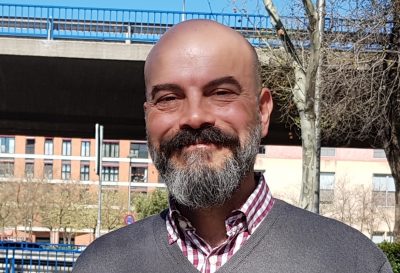
Tools, trips & transport modelling: an interim insight
A few weeks ago, we spoke with Sergio Fernández Balaguer, Responsible of the ‘International Cooperation Projects’ department and deputy coordinator from EMT Madrid. As MOMENTUM started its second half of the project in February 2021, and as recent positive updates about the fight against COVID-19 dominated the news, Sergio’s outlook towards the upcoming months of the project is rather positive. Furthermore, an overview of upcoming deliverables and tools was given. The research results that were created thanks to good team efforts will also be showcased during a session of the ITS World Congress (read more about our session here).
Sergio, in the beginning of 2021, MOMENTUM has reached its half-way mark. What were the two most significant achievements and why?
 I would say that one of the main achievements of the first half of the project is the identification of the main challenges in terms of transportation management and modelling, as well as future possible mobility scenarios that arise from the emergence of new forms of mobility (influenced as well due to the pandemic outbreak).
I would say that one of the main achievements of the first half of the project is the identification of the main challenges in terms of transportation management and modelling, as well as future possible mobility scenarios that arise from the emergence of new forms of mobility (influenced as well due to the pandemic outbreak).
These challenges and scenarios are guiding and will guide the way for the development of future modelling paradigms and policy strategies for transport and mobility planning and management, even beyond those developed under the scope of MOMENTUM project.
Another achievement is the set of methodologies for the extraction of mobility patterns, for the characterization of users and the use of the new forms of mobility, coming from the analysis and fusion of heterogeneous data sources.
Vaccination efforts across European countries look promising and first steps towards normality are taken. How did the COVID-19 pandemic impact the MOMENTUM project in the past and what is the present situation?
In practical terms the development of the technical activities of the project have not been deviated from the original plan, although the dissemination events had to be adapted to the mobility restrictions adopted during the current crisis.
Hopefully, we will be able to resume our physical meetings in autumn, which is not clear yet. The same applies for other planned events, like our workshops with policy makers, mobility service providers and other relevant stakeholders.
These upcoming events, whether digital or in person, will be used to discuss the implementation, calibration and validation of the tool set developed within MOMENTUM to a series of case studies in the MOMENTUM cities (Madrid, Thessaloniki, Leuven and Regensburg).
Our project partner CERTH has presented the MOMENTUM decision support tool to our internal group of follower cities (learn more here). When do you expect the tool to be ready? What is the current progress?
The final version of the tool is expected to be ready by this August. This tool allows the visualisation of a series of indicators of demand and travel times, related to shared mobility and demand responds to transport services. It comprises three different levels of complexity.
It starts with the calculation of indicators, which are based mainly on socio-economic data on the first level. It is followed by the second level; the calculation of indicators using optimisation algorithms and taking also into account the transport network. The most complex level, up to a more sophisticated third level in which there is an interaction with traffic and demand models used by the cities, including those developed in the project, to produce more sophisticated indicators.
EMT is also managing the local cases in Madrid. One of the research questions is: To what extent shared mobility services can improve public transport (PT) accessibility in districts without PT access? Do we already have first results?
The preliminary analysis performed with Madrid data, suggests that some of the shared mobility services, such as shared bicycles are complementary to PT services and they are used as a part of the multimodal journey, while for others, like shared cars or shared motorcycles, these synergies are not so clear. This should be further investigated to deliver conclusive results.
What are the next steps for the local assessments in Madrid?
The relations between PT and shared mobility services, including synergies and competences, will be further investigated aided using the choice mode models developed within MOMENTUM. In May, we have started to evaluate our different tools and techniques to explore the medium and long-term effects of different mobility policies and transport solutions.
These exercises will be led by our cities (Madrid, Regensburg, Leuven, and Thessaloniki) and will involve the participation of transport authorities, public transport operators, private businesses, and other stakeholders.
Several deliverables will be published in the upcoming weeks and months. What can our followers expect? Can you give us a first glimpse?
Beyond the deliverable of the decision support tool, we have already talked about, the project has just delivered two very relevant pieces of work. The first document is called ‘New Transport Modelling Approaches for Emerging Mobility Solutions: Supply and Demand Model’ and describes the new modelling approaches developed by the project.
Furthermore, the ‘Open Repository of Demand and Supply Models and Algorithms for Emerging Mobility Solutions’, where the code of some of the models developed, was uploaded. A description and the deliverable can be found here.


